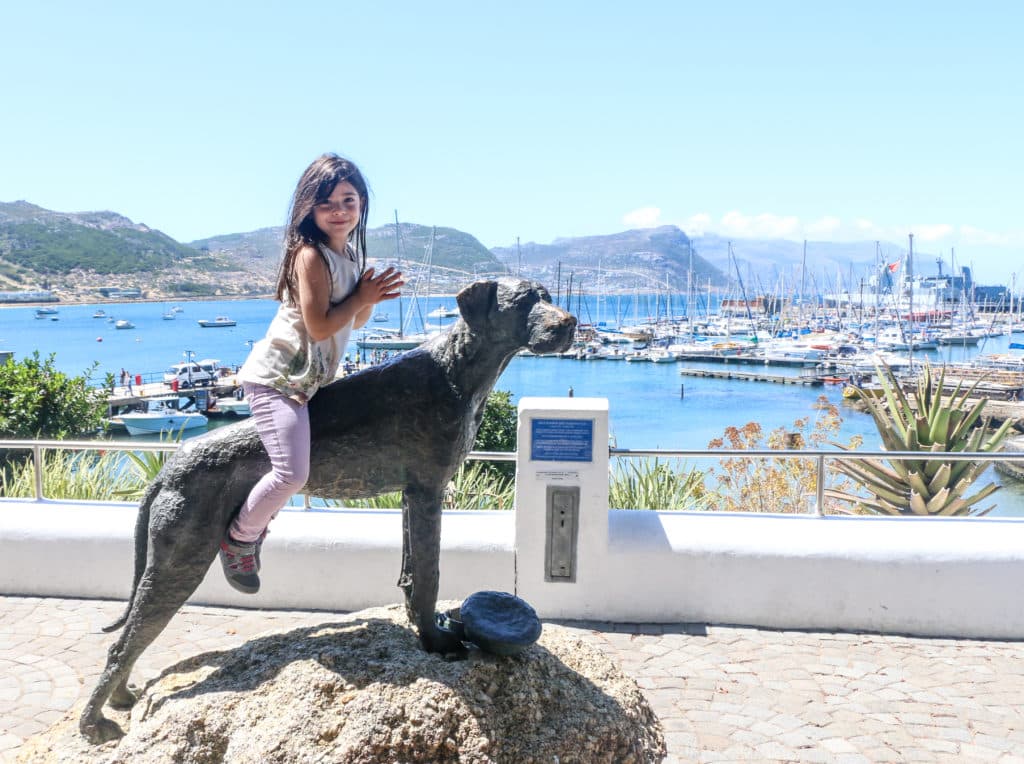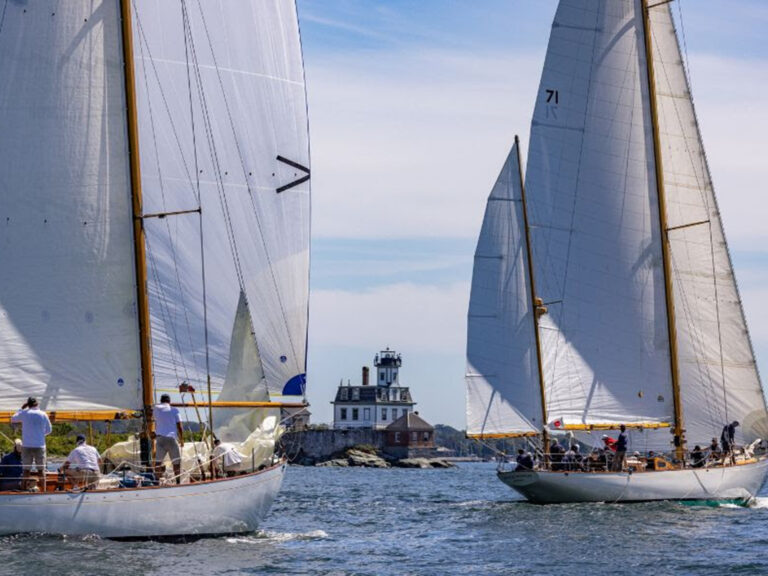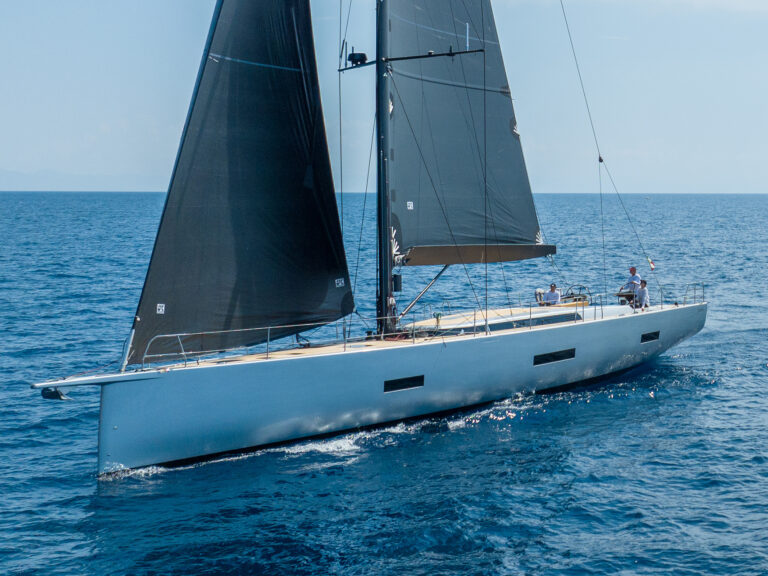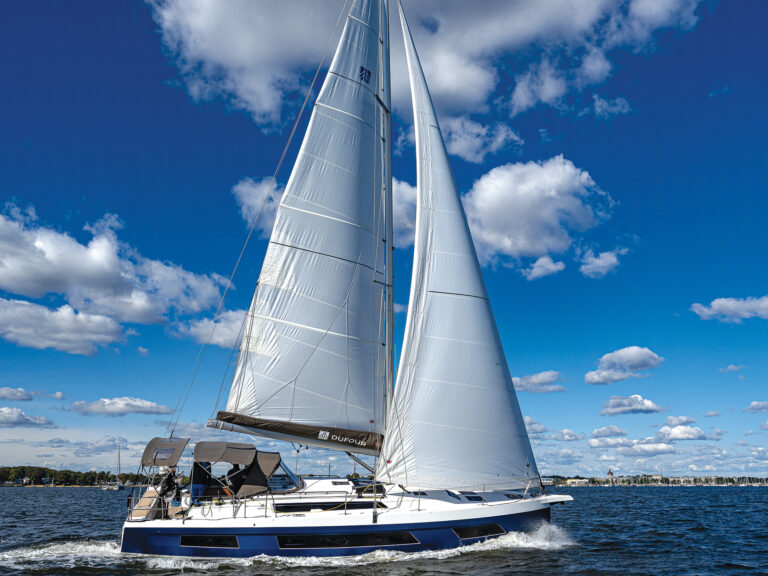
Cruising South Africa is a rich, culturally diverse experience, and so during our recent stopover there, I was getting a bit irritated that my daughter was explaining its complex history to my granddaughter only in racial terms of white and black. We were anchored in Simon’s Bay, so I said to 6-year-old Sokú Orion, “Let’s go for a walk. I want to introduce you to this town’s most famous citizen.” She was eager to accompany me, knowing there is always an ice-cream cone at the end of every shore leave with Grandpa.
“Many, many years ago, there was a stray dog in Simon’s Town that was just a nuisance,” I said to Sokú as I led her to Jubilee Square. “He was always getting in trouble, chewing things up and doing what dogs do. He’d poop here and pee there, and all the townspeople would chase him away, saying, ‘That darn dog, he is just a nuisance!’” “I like dogs,” she said.
“Me too,” I replied. “And so did the local sailors from the Royal Navy yard, who were always getting yelled at as well.” “Do you mean the whistles?” she asked.
“Yeah,” I said. “The sailors with the bosun’s whistles.” We were anchored close enough to the warships for her to hear the officers being piped aboard. The South African navy is still big on British maritime tradition. “Anyway,” I continued, “this misbehaving dog and the wayward sailors bonded. Often, they’d toss their hats on him, and occasionally, even dress him up in full uniform. The dog loved it and would follow them back to the navy yard. When an officer made the sailors stand at attention for review, there at the end of the line would be the dog, as rigid as a board.”
“You mean — like part of the crew?” asked Sokú.
“Exactly,” I said, guiding her in the right direction. “And the dog could easily recognize the sailors by their bell-bottoms and unusual hats. When they’d get too drunk to navigate a sidewalk, he’d guide them back to the navy yard.” “That’s funny!” said Sokú.
“Very,” I agreed. “One day in the nearby town of Fish Hoek, a police officer started to arrest some sailors for being too rambunctious. The policeman yelled at the sailors. The dog felt bad. He didn’t like getting yelled at either. So he chewed up the sheet of paper on which the policeman had written the intoxicated sailor’s names and chased the copper away while the giggling sailors escaped. Once this story made the rounds of the navy base and Simon’s Town, the dog started to get famous.”
“He’s just a nuisance,” the sailors and townsfolk would say with a happy smile, “but Just Nuisance is one of us!”
“What kind of a dog was he?” Sokú asked.
“I’ll show you,” I said, as we turned a corner. “Behold: Just Nuisance!”
Sokú was amazed at the large bronze statue of the majestic Great Dane.
“Wow!” she said in delight. “Can I climb on him?”
“Sure,” I said. “We Goodlanders are sailors, and Just Nuisance loves sailors!”
“More, more, more,” she sang out. “More stories, please!”

We strolled around the streets of Simon’s Town, going into various shops and bars and restaurants with faded pictures of the beloved Just Nuisance. I enjoyed how much she enjoyed the wholesome story of the perky pooch. Why not accentuate the positive? Why dwell on darkness when our combined future is so bright?
“Well, Just Nuisance used to accompany the sailors to Cape Town, and if they got too tipsy there, he’d lead them home. But he didn’t know which drunken sailors were which, and so sometimes sailors from ships docked elsewhere awoke confused in Simon’s Town.”
“Did everyone know how smart he was?” Sokú asked.
“Sure,” I said. “And everyone loved Just Nuisance: the sailors, the navy officers and everyone who lived here. He was king of the town, and all the bars that wanted to attract the free-spending sailors would put out a dog bowl for Just Nuisance as well. His fame spread far and wide. Every sailor in the whole wide world wanted to tip a few brewskis with Just Nuisance.”
“He was like a movie star?”
“Correcto,” I said. “Everywhere he went, South Africans made a big deal of him. There was only one problem, and it was a major one,” I added.
“What was the problem, Grandpa?”
“In order for Just Nuisance to accompany the sailors to and from Cape Town, he had to ride the train, and that was against the law. Sometimes, the sailors would dress him up and hide him. But the train conductors soon got wise to their tricks and would toss the dog off at the next station. But Just Nuisance would not be deterred from his duties. He’d just hop aboard the next train and try his luck with a different conductor. But, to be honest and fair, some riders did complain, not knowing it was Just Nuisance and thinking he was an ordinary dog. Finally, the situation came to a head. The conductors said they would shoot Just Nuisance the next time he rode the train with his drinking buddies.” “Oh, no!” cried Sokú, looking worried.
“Well, everyone in Simon’s Town was outraged. How dare they treat their dog in such a callous, thoughtless manner! The local sailors were particularly upset, as were their officers. So diplomatic cables flew between Cape Town and London. Soon the problem was solved. On August 25, 1939, Just Nuisance was officially enlisted into the British Royal Navy, the only dog ever to be so honored. And, since sailors were allowed to ride the trains for free, so could the dog. Justice was served! Isn’t that a neat story?”
“More, more!” she sang out.
“Even though Just Nuisance only lived seven years, he is still the most famous and most honored citizen of Simon’s Bay, nearly 80 years later,” I said. “They still sing songs about him and proudly tell stories about his canine exploits. Why, he’s almost a local saint. And he’s buried up on the hill. Do you want to go on a hike to his gravesite?”
“Yes, yes,” Sokú said excitedly.
It was a much longer trek than I expected, and difficult because of the unevenness of the winding, miles-long, steep stone path. It took almost an hour to climb up to the ridgeline, surrounded by a steady stream of dog-admiring tourists. I’m not as young as I used to be. I had to stop in the middle to rest. During that extended rest, I got chatting with a young black South African who was descending. He was evidently concerned about my heavy breathing — so concerned that he lent me his improvised walking stick. Perhaps my face was red; climbs aren’t my thing. He seemed like a nice fellow, neatly dressed with a fine wristwatch and shiny leather shoes.

“Are you from around here?” I asked. “Do you know the story of Just Nuisance?”
The young man smiled a curious smile. “My family used to live just outside the walls of the navy yard back in the day,” he said. “My great-grandfather was a stonemason. And, yes, we know the story of Just Nuisance quite well.” I liked his smile, it was both happy and sad at the same time. He was very well-spoken. I’d have chatted longer, but Sokú said, “Come on, Grandpa!”
After dinner aboard our 43-foot ketch Ganesh, I went for a stroll alone and patted myself on the back for showing our granddaughter a kinder, gentler side of South Africa than she’d learned on Robben Island, a UNESCO World Heritage Site and home of the country’s notorious prison. As I strolled past the Two and Sixpence bar on Main Street, I happened to glance inside. There was the handsome young black man who’d kindly lent me his walking stick. I turned in, said hello, sat down and ordered him another beer as I sipped a sparkling water with a twist.
Again, we chatted amicably. He lived in Cape Town and owned a construction company that built concrete office buildings. He’d been partially schooled in England and had spent some time in California — East Los Angeles, to be precise. Despite his relative youth, he had four children, three sons and a young daughter. He was doing fairly well and proud of it.
But what I really wanted to know about was that enigmatic and mysterious smile he’d flashed me midway up the hill.
“So Just Nuisance,” I started to say, but halted when I saw a flash of anger in his eyes.
“Back to that damned dog, are we?” he said.
I shut up. He’d said “damned” with unexpected vehemence. We sipped our drinks. Finally, he looked me up and down, and said, “My people were living in the mud while that damn catered-to pooch had a dog house in the navy base fit for a king. Nobody talked about how smart the involuntary laborers who constructed it were. My great-grandmother was starving, but just outside of the very bar and restaurant they weren’t allow to go into was a hunk of meat for a dog. And in the trains they couldn’t afford and the coaches they weren’t allowed into, there rode that silly damn animal, a living, breathing affront to us all.”
I took a sip of my drink to buy some time. I started to speak, then wisely decided against it.
“I wasn’t up there on the mountain today to see Just Nuisance’s grave,” hissed my new friend. “I was there to see my great-grandfather’s handwork, where, with every stone mined, carried, sorted, cut, polished and placed, he marveled at the injustice of it all.”
And there, dear reader, you have the bittersweet taste of cruising modern South Africa, where even the nicest of family fables can be instantly seared by the still-simmering crime of apartheid.
After visiting Simon’s Town, Fatty and Carolyn cruised along the Skeleton Coast and weathered sandstorms to see Namibia before heading westward across the Atlantic, bound for the Caribbean.








